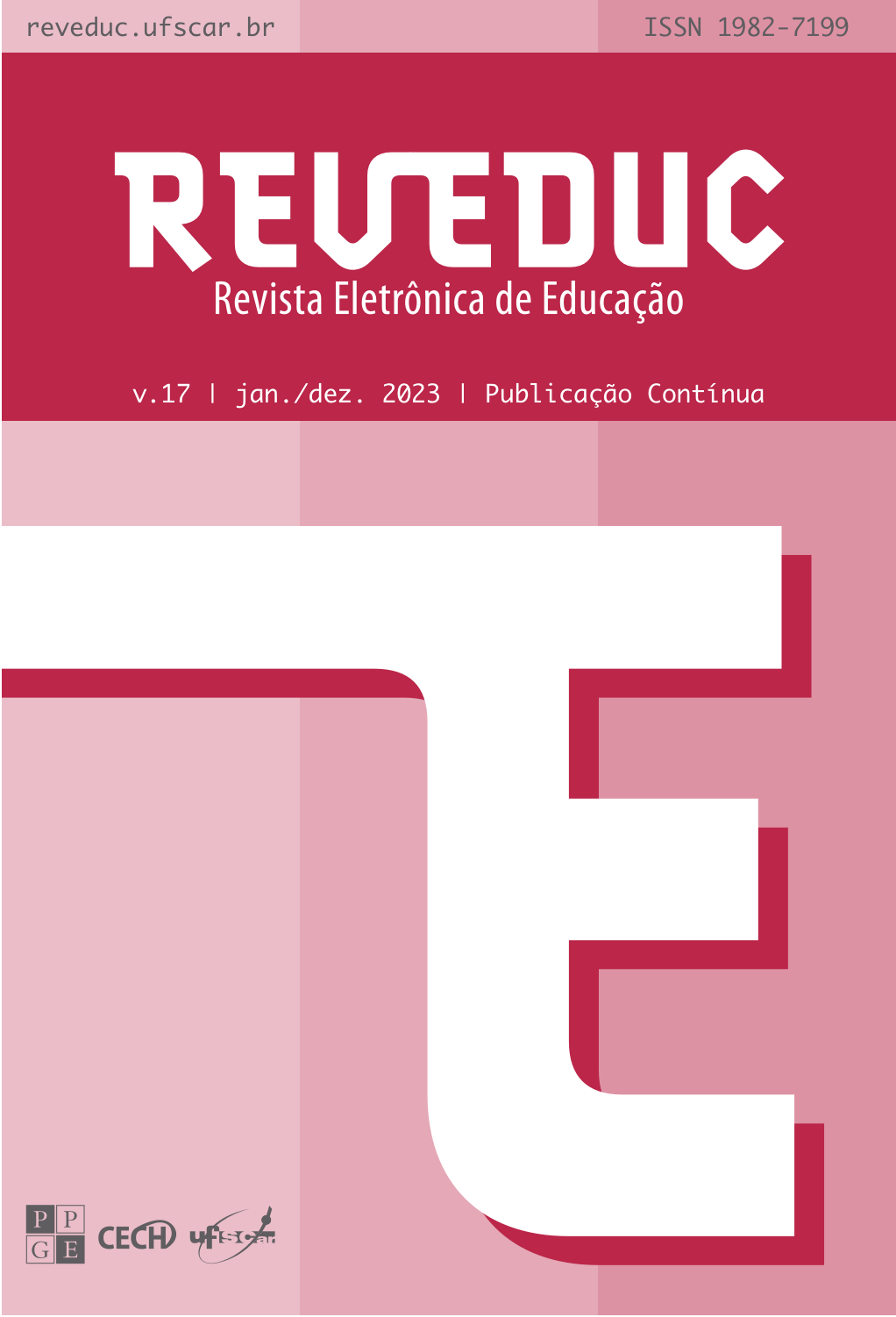Written Language Development in the Child: pedagogical implications of the cultural-historical theory
DOI:
https://doi.org/10.14244/198271993961Keywords:
Written language, Early years of elementary school, Cultural-historical theory.Abstract
This essay results from a theoretical reflection in a doctoral research. The aim is the exercise of reflection, from the Cultural-Historical Theory, on the theoretical and methodological principles that can favor the development of written language in children in the context of Early Childhood Education and Elementary Education, as opposed to a way of writing as technique, which appropriation depends on practical exercises and without the establishment of a meaningful communicative situation for the child. Based on a review of the main concepts of Vigotski (1997c), Luria (2006) and other authors related to the formation and development of written language as a human psychological function, it considers written language as a cultural and symbolic activity, which process of appropriation happens since early childhood. It concludes that the different ways used by the young child to make sense of the world - the indicative gesture, the role play and the drawing as an instrument - contribute to the development of a graphic ability to express, which becomes increasingly sophisticated as the child owns written signs, based on visual indicators, and language activity carried out through them in educational activities intentionally prepared to achieve this goal, favoring the development of children as authors and text readers.
Metrics
References
ARENA, D. B.; ARENA, A. P. B.; SANTOS, S. O. Escolhas de letras nas primeiras escritas infantis: função e unidade no discurso. Ensino em Re-Vista, Uberlândia, v. 18, n. 1, p. 67-80, 2011. Disponível em: http://www.seer.ufu.br/index.php/emrevista/article/view/12365. Acesso em: 1 jan. 2020.
BAJARD, É. Manifesto dos usuários da escrita. Ensino em Re-Vista, Uberlândia, v. 21, n. 1, p. 189-195, 2014. Disponível em: http://www.seer.ufu.br/index.php/emrevista/article/view/25061. Acesso em: 27 dez. 2019.
BAJARD, É. O signo gráfico, chave da aprendizagem da escrita. Ensino em Re-Vista, Uberlândia, v. 23, n. 1, p. 201-225, 2016. Disponível em: http://www.seer.ufu.br/index.php/emrevista/article/view/35412. Acesso em: 29 jan. 2020.
BORTOLANZA, A. M. E.; FREIRE, R. J. Entre significar e decifrar a escrita: a alfabetização de Ivo. FAEEBA, Salvador, v. 28, n. 54, p. 139-154, 2019. Disponível em: https://www.revistas.uneb.br/index.php/faeeba/article/view/6186. Acesso em: 15 jan. 2020.
CORRÊA, A. B. Textos manuscritos e digitais: apropriação da escrita por crianças de 3º ano do ensino fundamental. 2017. Dissertação (Mestrado em Educação) – Universidade de Uberaba, Uberaba, 2017. Disponível em: https://uniube.br/cpe/biblioteca/dissertacoes.php. Acesso em: 15 jul. 2023.
CORRÊA, A. B.; BORTOLANZA, A. M. E. Desenvolvimento humano e o papel do signo na constituição da linguagem verbal, da fala e da consciência humana: pressupostos de Vigotski, Leontiev e Luria. Eutomia, Recife, v. 1, n. 21, p. 97-119, 2018. Disponível em: https://periodicos.ufpe.br/revistas/EUTOMIA/article/view/237442. Acesso em: 15 jul. 2023.
LIMA, E. A. de. Trabalho pedagógico na educação infantil: em busca da atitude ativa de professores e crianças. In: MENDONÇA, S. G. de L.; PENITENTE, L. A. A.; MILLER, S. (Org.). A questão do método e a teoría histórico-cultural: bases teóricas e implicações pedagógicas. São Paulo: Cultura Acadêmica, 2017. p. 113-129.
LUGLE, A. M. C.; MELLO, S. Produção de sentido para a linguagem escrita e formação da atitude leitora/autora. Revista de Educação, Campinas, v. 20, n. 3, p. 187-199, 2015. Disponível em: https://periodicos.puc-campinas.edu.br/reveducacao/article/view/2901. Acesso em: 03 dez. 2019.
LURIA, A. R. Memória. In: LURIA, A. R. Curso de psicologia geral. Rio de Janeiro: Civilização Brasileira, 1979, 3 v., p. 39-96.
LURIA, A. R. O desenvolvimento da escrita na criança. In: VIGOTSKI, L. S.; LURIA, A. R.; LEONTIEV, A. N. Linguagem, desenvolvimento e aprendizagem. São Paulo: Ícone, 2006, p. 143-189.
VIGOTSKI, L. S. El problema de la edad. In: VIGOTSKI, L. S. Obras escogidas. 2. ed. Madrid: Visor, 1997a, 4 v., p. 251-273.
VIGOTSKI, L. S. El problema del desarrollo de las funciones psíquicas superiores. In: VIGOTSKI, L. S. Obras escogidas. 2. ed. Madrid: Visor, 1997b, 3 v., p. 11-46.
VIGOTSKI, L. S. La prehistoria del desarrollo del lenguaje escrito. In: VIGOTSKI, L. S. Obras Escogidas. 2. ed. Madrid: Visor, 1997c, 3 v., p. 183-206.
VIGOTSKI, L. S. Pensamento e palavra. In: VIGOTSKI, L. S. A construção do pensamento e da linguagem. 2. ed. São Paulo: WMF Martins Fontes, 2009. p. 395-486.
Downloads
Published
How to Cite
Issue
Section
License
CC-BY-NC License
Revista Eletrônica de Educação adopts the Creative Commons BY-NC license of type "Non-Commercial Attribution". This license permits, except where noted, that the end user re-mars, adapt, and create from his or her work for non-commercial purposes, on the condition of assigning due credit and in the manner specified by the author or licensor.
##plugins.generic.dates.accepted## 2023-05-23
##plugins.generic.dates.published## 2023-10-31






